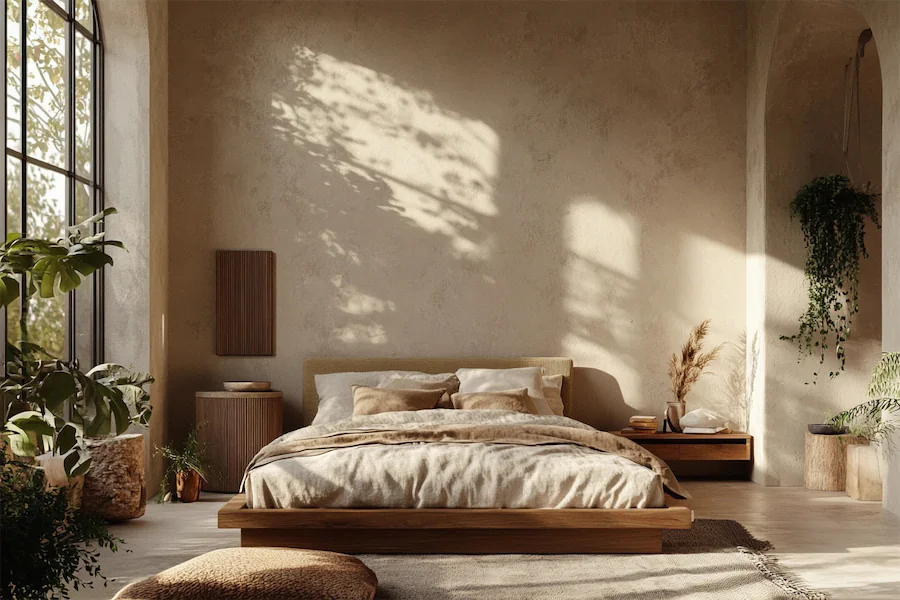A neutral bedroom design employs a palette of understated colors—such as whites, beiges, grays, and soft earth tones—to create a serene and timeless space that promotes relaxation and versatility.
Introduction to Neutral Bedrooms
Neutral bedrooms focus on subtle color schemes that provide a calming backdrop, allowing for flexibility in decor and personal expression. This design approach emphasizes simplicity and elegance, making it suitable for various styles, from minimalist to traditional.
History and Origins of Neutral Bedrooms
The use of neutral colors in interior design has long been associated with creating tranquil and sophisticated environments. Historically, neutral tones have been favored for their ability to make spaces appear larger and more open, as well as for their adaptability to different design elements and personal tastes.
Key Features of Neutral Bedrooms
- Soft Color Palettes: Incorporate shades of white, beige, gray, and taupe to establish a soothing atmosphere. These colors serve as a versatile foundation that can be easily updated with changing decor trends.
- Layered Textures: Introduce various textures through bedding, rugs, and accessories to add depth and interest without relying on bold colors. Materials like linen, cotton, and wool contribute to a cozy and inviting feel.
- Natural Materials: Utilize wood, stone, and natural fibers to bring warmth and organic elements into the space, complementing the neutral color scheme. These materials enhance the room’s connection to nature and promote a sense of tranquility.
- Minimalist Decor: Opt for simple and functional furnishings to maintain a clean and uncluttered look, allowing the neutral palette to stand out. This approach emphasizes quality over quantity, focusing on essential pieces that contribute to the room’s overall harmony.
- Accent Pieces: Incorporate subtle pops of color or metallic accents through artwork, throw pillows, or lighting fixtures to add personality and prevent the space from feeling monotonous. These accents can be easily updated to refresh the room’s appearance over time.
Applications of Neutral Bedroom Design
- Master Bedrooms: Create a tranquil retreat by employing neutral tones that promote relaxation and restful sleep. The understated color scheme fosters a peaceful environment, ideal for unwinding after a long day.
- Guest Rooms: Design an inviting space that appeals to various tastes by using a neutral palette, ensuring comfort for all guests. The versatility of neutral colors accommodates different preferences, making the room universally appealing.
- Small Bedrooms: Employ light neutral colors to make compact spaces appear larger and more open, enhancing the room’s overall comfort. Lighter shades reflect natural light, creating an airy and spacious feel even in smaller areas.
Considerations When Designing a Neutral Bedroom
- Balance: Ensure a harmonious mix of textures and materials to prevent the space from feeling flat or sterile. Combining different fabrics, finishes, and patterns adds visual interest and depth to the room.
- Lighting: Incorporate various lighting sources, such as ambient, task, and accent lighting, to enhance the room’s ambiance and highlight design elements. Proper lighting can accentuate textures and create a warm, inviting atmosphere.
- Personal Touches: Add decor that reflects your personality, such as artwork or decorative items, to make the space uniquely yours while maintaining the neutral theme. Personal mementos and carefully chosen accessories can infuse character into the room without disrupting the cohesive color scheme.
Conclusion
Designing a neutral bedroom involves thoughtful selection of colors, materials, and decor to create a space that exudes tranquility and timeless elegance. By focusing on a cohesive neutral color palette, incorporating layered textures, and adding personal touches, you can craft a bedroom that serves as a peaceful retreat tailored to your individual style.
